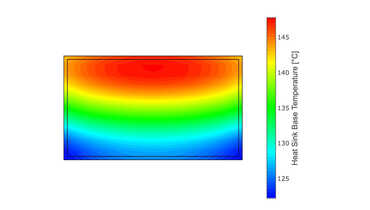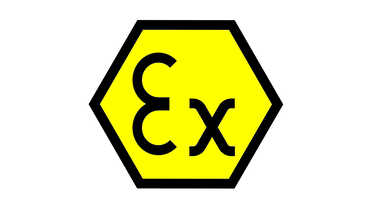[TOC]
At this year's RISC-V Summit Europe 2024 in Munich, we were greeted by an atmosphere of excitement and anticipation. Calista Redmond, the CEO of RISC-V International, radiated optimism as she took the stage, reflecting the remarkable growth and potential of RISC-V technology. Her enthusiasm was well-founded, given the staggering advancements the RISC-V ecosystem has experienced over the past year.
RISC-V Market Skyrockets to $6.1 Billion
Redmond shared that the RISC-V SoC market had achieved an impressive sales milestone, reaching $6.1 billion last year. This represented a phenomenal 276.8 percent increase compared to the previous year. Looking forward, she predicted an average annual growth rate of 47.4 percent through 2030, envisioning a market volume of $92.7 billion by the end of the decade. This rapid growth can be attributed to several factors that Redmond highlighted.
Global Standard and Collaboration Drive Growth
Firstly, RISC-V has become a global standard Instruction Set Architecture (ISA), now a fundamental element in nearly every design. The open nature of its architecture fosters worldwide collaboration, allowing developers to build with confidence knowing the ISA and its extensions are fixed and reliable. The expanding membership of RISC-V International is a testament to its growing influence, with many existing members deepening their engagement with RISC-V.
Tech Giants Embrace RISC-V
Redmond pointed to notable examples such as Google, which embraced RISC-V by accepting patches in late 2022 and announcing full support for RISC-V in Android by fall 2023. Although there was a brief withdrawal in spring 2024, Google reaffirmed its commitment to supporting RISC-V architectures. Another significant development was Nvidia’s transition from a strategic partner to a premium member, and the formation of Quintauris by Bosch, Infineon, Nordic, NXP, and Qualcomm to specialize in RISC-V, further showcasing the industry's confidence in this technology.
From Cores to SoCs: RISC-V's Maturation
The shift from individual cores to System on Chips (SoCs) indicates that RISC-V has matured beyond its early stages. Redmond emphasized that countries and continents recognize the critical importance of collaboration based on RISC-V. Despite investments in alternative architectures, multinational corporations show a keen interest in RISC-V to enhance the environmental efficiency of data centers and reduce dependency on single providers, impacting supply chains and strategic roadmaps.
RISC-V Thrives in Research and Development
In the realm of research, RISC-V is making significant strides, driven by the collaborative spirit of academic and industrial institutions. Redmond believes this sector is experiencing the fastest growth within the RISC-V landscape.
Industry Experts Predict Bright Future for RISC-V
It's not just Redmond who sees a bright future for RISC-V. Edward Wilford, Senior Principal Analyst at Omdia, is equally optimistic. He predicts robust growth in the automotive sector while maintaining industrial applications as the largest market for RISC-V technology. By the end of this year, 30 percent of all RISC processors are expected to be utilized in industrial devices, with an anticipated average growth rate of 80 percent for RISC-V processors in the IoT sector between 2020 and 2025.
RISC-V vs. Other Architectures: The Processor Perspective
Wilford explains that processors are the best metric for comparing RISC-V with other architectures, given the varied development approaches in the industry. He notes that RISC-V is particularly advantageous for new applications where developers are not already committed to existing Arm products. The rise of AI presents vast opportunities for RISC-V, with its flexibility and scalability being key advantages in AI-driven developments.
Explosive Growth Predicted for RISC-V Processors
Omdia's forecasts suggest that RISC-V-based processor shipments will grow by nearly 50 percent annually, reaching 17 billion units by 2030. Industrial applications will dominate, but the automotive sector will see the highest growth rates, with semiconductors playing a crucial role in the industry's transformation. Wilford highlights RISC-V's appeal in automotive applications due to the ownership and customization it offers, which is not possible with licensed ISAs.
RISC-V's Customization Edge
Dr. Philipp Tomsich, Founder and Chief Technologist of Vrull, echoes these sentiments, emphasizing RISC-V’s ability to freely add domain-specific accelerators. This flexibility is a major differentiator, allowing developers to tailor RISC-V cores to specific use cases, from transformers to convolutional neural networks (CNNs).
Geopolitical Challenges on the Horizon?
Despite geopolitical concerns, particularly regarding China's reliance on RISC-V, RISC-V International is prepared to navigate potential interventions from the U.S. government. A Government Affairs Council is actively engaged to ensure open communication and strategic responses to any challenges that may arise.
As we reflect on these insights and projections, it's clear that RISC-V is poised for continued expansion and innovation. This year’s summit has underscored the immense potential and growing impact of RISC-V across various sectors, setting the stage for an exciting future.
If you are interested in the full article. Please follow this link https://www.elektroniknet.de/halbleiter/risc-v-markt-waechst-rasant.218635.html
My Comments
Skyrocketing from the ground floor
RISC V shows tremendous promise but has not yet fully realized its potential. We have benchmarked the SiFive RISC V Boards and the result are quite underwelming. It will take a few more years of development and refinement before we can truly declare, “The king is dead, long live the king.” ARM still holds a significant advantage over RISK V for several reasons. First, ARM has a well-established ecosystem with extensive software and hardware support, making it easier for developers to work with. Additionally, ARM’s performance, power efficiency, and reliability are currently superior due to decades of optimization and refinement. The widespread adoption and commercial backing of ARM technology also provide it with robust resources for ongoing innovation. Therefore, while RISC V is on the rise, ARM remains the preferred choice for most Embedded HMI applications today.
Risk of RISC is still too high
When contemplating a shift to RISC-V, another crucial factor emerges: the ongoing rapid advancement in this domain, which is anticipated to persist in the coming years. Establishing long-term support essential for industrial-grade products remains challenging. Our strategy is to maintain our ARM infrastructure for the foreseeable future due to the perceived risks associated with RISC-V. Instead, we rely on the consumer market to drive innovation cycles within the RISC-V platform, given their shorter product lifecycles and propensity for pushing technological boundaries.



